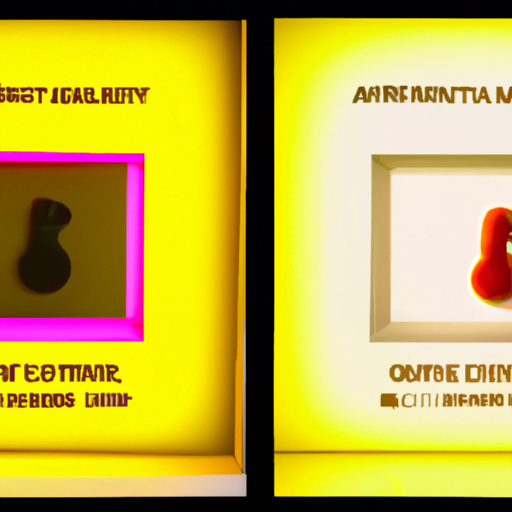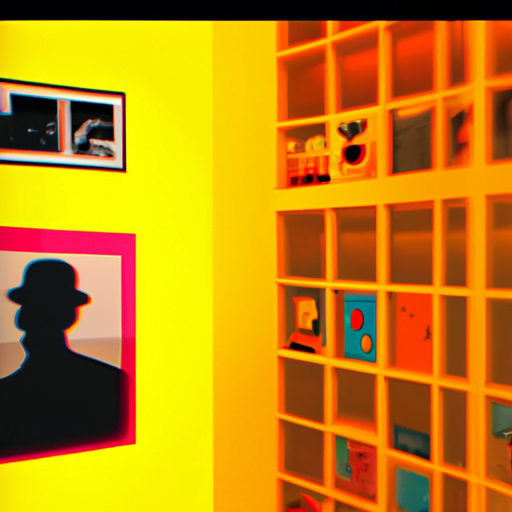
-
Table of Contents
Interactive Exhibition Design: Engaging Visitors through Graphics

Interactive exhibition design has become an essential aspect of creating engaging and memorable experiences for visitors. By incorporating graphics into these interactive displays, designers can captivate audiences and enhance their overall experience. In this article, we will explore the importance of graphics in interactive exhibition design and how they can effectively engage visitors.
The Power of Visual Communication
Visual communication plays a crucial role in capturing the attention of visitors and conveying information effectively. Graphics have the ability to communicate complex ideas in a simple and visually appealing manner. When used in interactive exhibition design, graphics can help visitors understand the content more easily and engage with it on a deeper level.
For example, imagine a science exhibition that aims to educate visitors about the solar system. By incorporating visually stunning graphics of planets, stars, and galaxies, visitors can have a better understanding of the vastness and beauty of space. These graphics can also be interactive, allowing visitors to explore different aspects of the solar system and learn at their own pace.
Creating Immersive Experiences
Graphics in interactive exhibition design can create immersive experiences that transport visitors to different worlds or time periods. By using high-quality graphics, designers can create realistic and visually stunning environments that engage visitors’ senses and make them feel like they are part of the exhibit.
One notable example is the “Van Gogh Alive” exhibition, which uses high-resolution projections of Van Gogh’s artwork to create an immersive experience. Visitors are surrounded by larger-than-life images of his paintings, accompanied by music and narration, allowing them to truly immerse themselves in the artist’s world. This exhibition has been highly successful in engaging visitors and providing them with a unique and memorable experience.
Enhancing Interactivity
Graphics can also enhance interactivity in exhibition design by providing visual cues and feedback to visitors. By incorporating interactive elements such as touchscreens, motion sensors, or augmented reality, designers can create a dynamic and engaging experience for visitors.
For instance, in a history museum, graphics can be used to create interactive timelines that allow visitors to explore different historical events. By touching specific points on the timeline, visitors can access additional information, images, or videos related to that particular event. This interactive approach not only encourages active participation but also provides visitors with a personalized learning experience.
Case Study: The Museum of the Future
The Museum of the Future in Dubai is a prime example of how graphics can be used to create an interactive and engaging exhibition. The museum features a variety of interactive displays that utilize graphics to convey information and captivate visitors.
One of the highlights of the museum is the “Future Self” exhibit, where visitors can see a digital representation of themselves in the future. By using advanced facial recognition technology and high-quality graphics, visitors can witness a realistic and personalized glimpse into their future selves. This interactive experience not only engages visitors but also sparks their imagination and encourages them to contemplate the possibilities of the future.
Statistics on the Impact of Graphics in Exhibition Design
Statistics can provide valuable insights into the impact of graphics in exhibition design. Here are some noteworthy statistics:
- According to a study by the Event Marketing Institute, 98% of attendees feel more inclined to purchase a product or service after attending an interactive exhibition.
- A survey conducted by the American Alliance of Museums found that 80% of visitors believe that interactive exhibits enhance their overall museum experience.
- In a study published in the Journal of Museum Education, researchers found that the use of graphics in exhibitions significantly increased visitors’ recall and understanding of the content.
Key Takeaways
Interactive exhibition design is greatly enhanced by the use of graphics. By incorporating visually appealing and interactive graphics, designers can create immersive experiences that engage visitors on multiple levels. Graphics also play a crucial role in conveying information effectively and enhancing interactivity. The Museum of the Future in Dubai serves as a prime example of how graphics can be used to create captivating and personalized experiences for visitors.
Statistics further support the importance of graphics in exhibition design, highlighting their impact on visitor engagement and understanding. By leveraging the power of visual communication, designers can create memorable and impactful exhibitions that leave a lasting impression on visitors.
In conclusion, graphics are a vital component of interactive exhibition design. They have the power to captivate, educate, and engage visitors in ways that traditional displays cannot. By harnessing the potential of graphics, designers can create immersive and interactive experiences that leave a lasting impact on visitors.
